


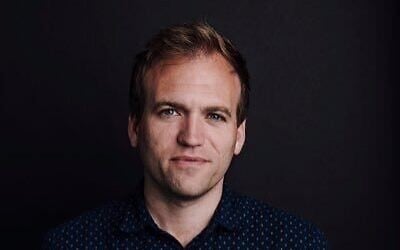
Rev. Johnnie Moore is a believer, in more ways than one.
The 41-year-old clergyman was one of US President Donald Trump’s early Evangelical backers, a man whose deep faith has brought him to refugee camps in Africa and to palaces of Middle Eastern leaders.
He also believes that the humanitarian aid initiative that he runs in Gaza as executive chairman is the antidote to a fundamentally flawed humanitarian system that has caused human suffering well beyond the war-torn Strip.
“I’m a Christian,” Moore told The Times of Israel on Friday. “I can’t think of anything more Christian than feeding people. I happen to also believe that a broken aid system has only prolonged suffering not just in the Gaza, but all over the world.”
The Gaza Humanitarian Foundation started distributing aid on May 26, following a nearly three-month Israeli blockade amid a war that has already seen shortages that have plunged Gaza into a humanitarian crisis.
The secretive group has touted its delivery of 52 million meals since its launch, but this has been marred by reports of near-daily shootings of Palestinians who trekked long distances while crossing IDF lines to reach the small number of GHF distribution sites.
I can’t think of anything more Christian than feeding people.
The effort runs counter to the mainstream aid community, which argues that the organization is unable to meet needs in Gaza and allows Israel to use aid as a weapon by determining who can receive it. Critics, including much of the international community, have also accused the GHF of putting aid seekers in harm’s way by placing the distribution centers in IDF-controlled zones and requiring Gazans to walk long distances in order to reach them.
On Tuesday, more than 165 major international charities and non-governmental organizations, including Oxfam, Save the Children, and Amnesty, called for an immediate end to the Gaza Humanitarian Foundation.
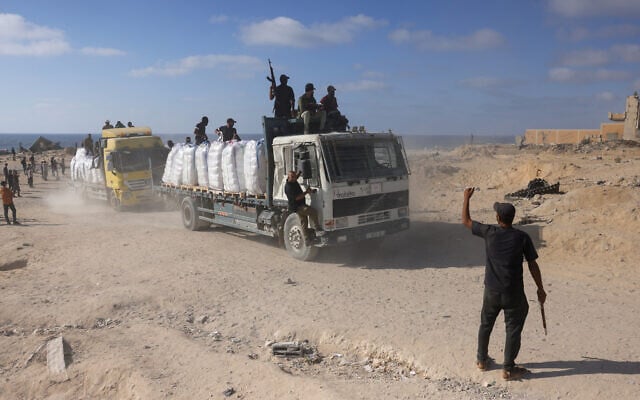
Responding to the aid groups, GHF called on them to join their operations.
“Instead of bickering and throwing insults from the sidelines, we would welcome other humanitarian groups to join us and feed the people in Gaza,” the statement said. “We are ready to collaborate and help them get their aid to people in need. At the end of the day, the Palestinian people need to be fed.”
Moore said the mainstream aid groups cling to “a commitment to the existing system almost with fundamentalism… actually prolonging this conflict and causing more suffering to the Gaza people.”
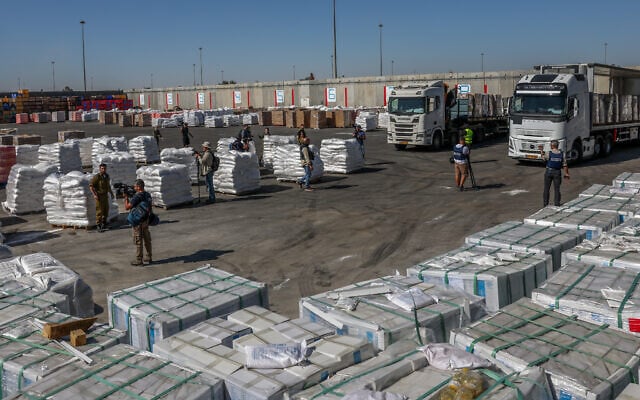
An official working for an international organization providing aid to Gaza told The Times of Israel that “those working to provide aid are almost always guided by morally good intentions. But good intentions don’t guarantee good outcomes.”
The aid effort in Gaza reflects a closed culture shaped by moral tribalism, where participation and loyalty to group values are prized above critical evaluation, even when the consequences are harmful.
“Humanitarians cannot assume that providing aid in war is universally good,” explained the official, granted anonymity in order to speak openly. “Aid can be manipulated by bad actors, and upholding core humanitarian principles like neutrality isn’t always possible, or even ethical. Speaking and thinking critically about aid in any context, including the war in Gaza, shouldn’t be taboo. It’s accountability.”
The aid official concurred with Moore that “the aid effort in Gaza reflects a closed culture shaped by moral tribalism, where participation and loyalty to group values are prized above critical evaluation, even when the consequences are harmful.”
Though officially independent, the mechanism was set up with American and Israeli backing as a way to get aid to Gazans in a way that did not leave the goods vulnerable to being stolen by Hamas, which allegedly sold them on the black market to fund its continued operations.
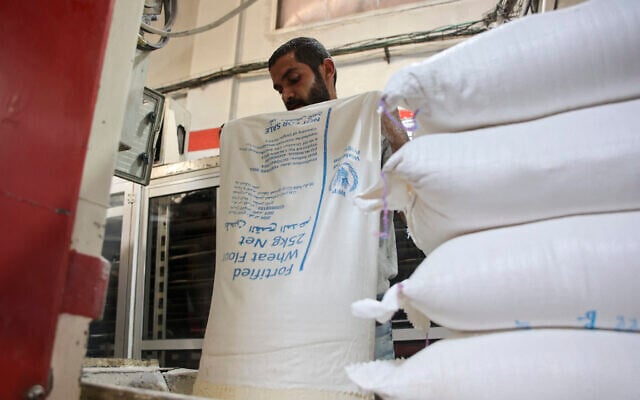
That is still happening with non-GHF aid initiatives in Gaza, said Moore, who claimed that the vast majority of UN aid is looted by Hamas or armed gangs. A UN official acknowledged to The Times of Israel last week that some of its aid is looted, but rejected the claim that most of it is taken by bad actors.
Last week, said Moore, the World Food Program, a UN agency, drove a truck with flour in and let people grab whatever they could, calling it “self-distribution.”
A WFP spokesperson told The Times of Israel that proper food distribution will only be possible when law and order improves.
“Given the urgent need for families to access food, WFP will tolerate hungry civilian populations taking food from its trucks, as long as there is no violence and proper sharing of the food among civilians.”
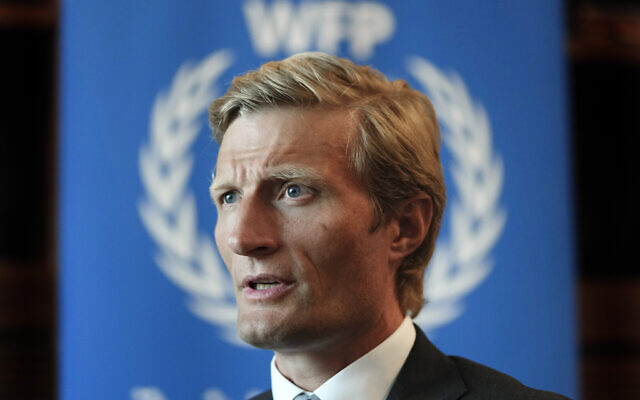
The spokesperson also said the WFP condemned “any unsolicited interference with humanitarian convoys and continues to work with all parties and communities to ensure that aid convoys can safely reach their destinations unimpeded. We have publicly stated many times that our teams do not have evidence of large-scale diversion of aid in Gaza.”
The GHF has also come under criticism for near-daily reports of lethal violence against civilians traveling to aid centers or waiting for them to open.
Last week, the Hamas-run Gaza health ministry said at least 549 people had been killed and 4,000 had been wounded trying to pick up aid from GHF sites or while waiting for UN food trucks since the GHF launched.
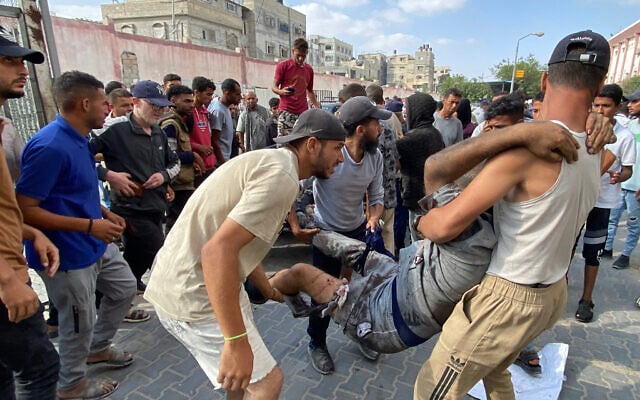
The numbers have not been verified, but between May 27 and June 24, there were at least 19 IDF shooting incidents related to humanitarian aid distribution, according to a review of reports out of Gaza conducted by The Times of Israel.
“Palestinians in Gaza face an impossible choice: starve or risk being shot while trying desperately to reach food to feed their families,” the international aid groups said in their joint news release on Tuesday.
On Monday, the IDF admitted in a statement that it has killed several civilians near aid sites in recent weeks and said it has learned lessons that will help it avoid similar incidents in the future.
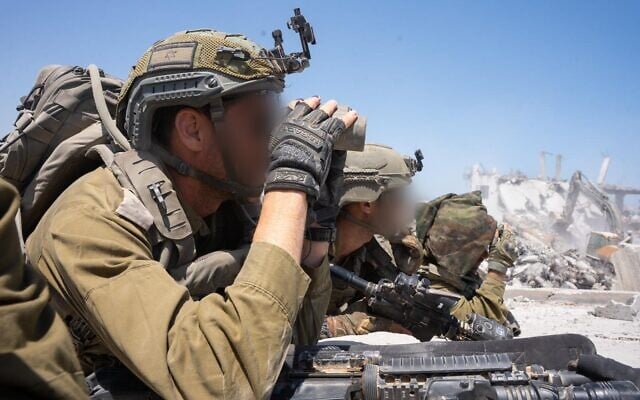
Moore said that when there are incidents, he can pick up the phone and call the IDF, which investigates. “The difference between the IDF and Hamas is Hamas lies about everything all the time.”
He blamed Hamas for “intentionally killing people in order to disincentivize them from accessing aid or to further their disinformation campaign that our free food distribution sites are somehow traps.”
The difference between the IDF and Hamas is Hamas lies about everything all the time.
“We’re not denying that there haven’t been tragic incidents in the Gaza Strip of people seeking aid, and they’ve been harmed,” Moore continued. “We just don’t know what’s true and what isn’t true. What we do know is what has and has not happened in our sites. There hasn’t been violence in our sites. There hasn’t been violence in proximity to our sites that we’ve heard or that we’ve witnessed. What we do witness every single day is some arbitrary, I believe, arbitrary number that comes from Hamas that’s reported by the press because somehow Hamas has decided it.”
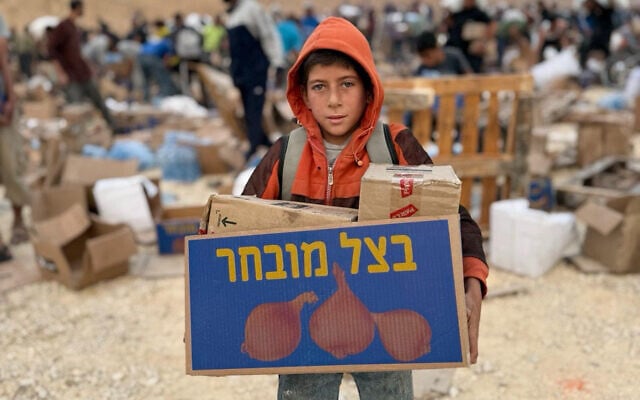
The IDF’s statement on Monday acknowledged that Palestinian civilians have been killed and injured by its fire near aid distribution sites, including by artillery fire, but claimed that the tolls reported by Hamas authorities are exaggerated. The military also announced that it had “reorganized the access routes” to the humanitarian hubs, adding new fencing and signage along with additional paths.
The statement came days after the Haaretz daily reported that the military had launched a probe last week into potential war crimes committed by its troops. It quoted unidentified soldiers as saying that the aid sites were like a “killing field” and that they were ordered to treat the aid seekers like combatants, using heavy live fire for crowd control.
According to the military, troops on the ground have only used live gunfire when a threat was posed to them, including when dozens of suspects approached forces outside of the designated routes to the aid sites operated by the Israel- and US-backed GHF, or outside the operating hours.
In those cases, the IDF said, a small number of people were hit by its fire, and not dozens as Hamas has claimed.
Even if the violence has taken place outside of GHF sites, scenes from the four distribution centers show a free-for-all as crowds tear apart unwieldy boxes and throw what they can into sacks.
“The images that are coming out of our distribution sites are indicative of the actual level of food insecurity that has been reached in the Gaza Strip,” Moore argued.
“These people didn’t know if we were going to be there the next day. And so they sent their strongest loved one or their neighbor. They got what they could because the assumption is the UN hates us. Hamas is threatening us. We’re going to go away. And so they may not be here tomorrow.”
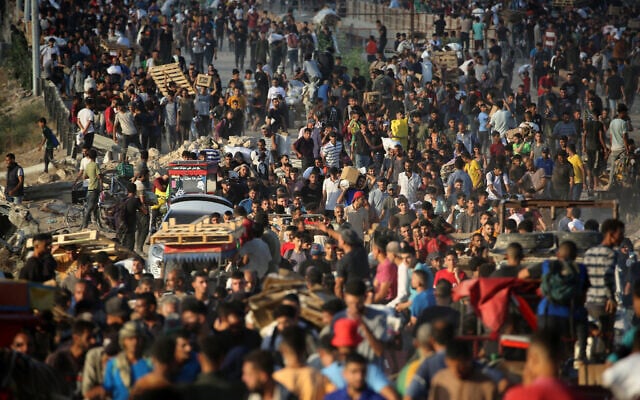
In order to allay Gazans’ fears that the GHF operation will end, Moore explained, the organization opens sites even on days when it can only provide smaller amounts of aid.
He pointed out that aid delivery continued even during last month’s 12-day war between Israel and Iran.
“Our guys weren’t hunkered into their shelters,” said Moore. “They were immediately surging aid into the Gaza Strip because we didn’t know how long we were going to be shut down for. Fortunately, we weren’t shut down for long. We were shut down for less than a day, and we continued delivering aid every single day while Iranian missiles were being shot out of the sky, and some of them landing over the course of that entire war.”
Most of the international aid groups, he said, didn’t even try to get food in during the conflict.
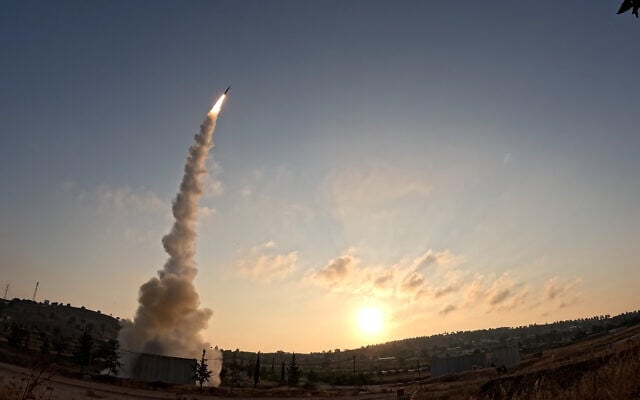
Currently, there is no screening process for Palestinians who seek to collect aid, meaning that Hamas members are likely also arriving and picking up food packages. In the coming weeks, the IDF hopes, a screening process may begin, along with the opening of additional aid sites.
As the GHF operation grows and more sites are opened, Moore promised, “you’ll have a more organized, more orderly operation as you surge more food in the Strip, as we scale from four sites to more sites, including in the north.”
The organization currently operates two sites in Rafah along the Egyptian border, one in southern Gaza’s Khan Younis, and one near Wadi Gaza in the central Strip.
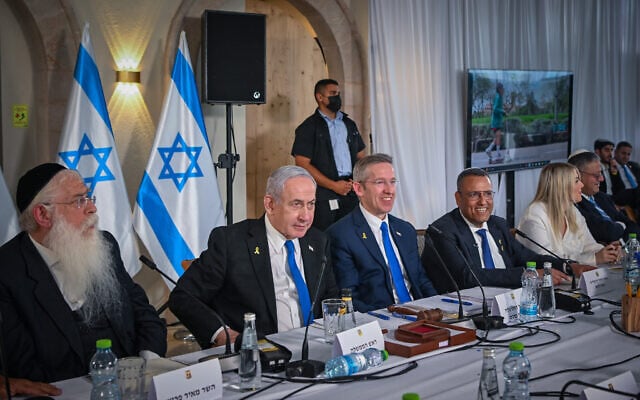
“We can’t move further into the north without engaging with Israel on that process,” he said. “On the same token, we have to make sure that when we move further into the north, that the security environment makes it possible to fulfill our mission.”
GHF announced over a month ago that Israel had agreed to allow it to establish distribution sites in the north, but those have yet to materialize.
Israel might expand the entry of humanitarian aid into Gaza “in the near future as part of a broader and larger plan,” an Israeli official told The Times of Israel on Monday.
“Then we would be reducing the tension between the population and the soldiers, as well as other advantages which I will not go into right now.
“It’s a bigger plan, but it’s still under debate and not decided.”
Observers have been unable to establish who is currently funding the GHF operations. The GHF uses private US security and logistics companies to transport the aid into Gaza for distribution at so-called secure distribution sites.
In documents supporting its recent application to the US Agency for International Development, the group said it received nearly $119 million for May operations from “other government donors,” but gave no details. It expects $38 million from those unspecified government donors for June.
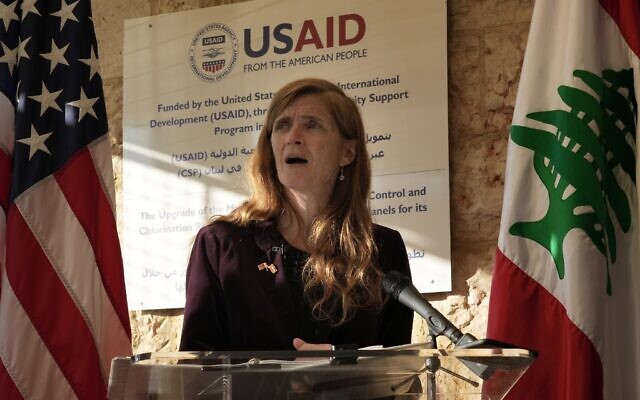
The US State Department approved $30 million in funding for the Gaza Humanitarian Foundation, calling on other countries to also support the group delivering aid in war-torn Gaza.
Israel has insisted that it has had no part in funding the new Gaza aid operation, although the Kan public broadcaster reported earlier this month that the government had approved the transfer of NIS 700 million (some $280 million) to fund it.
Moore said the initial funding for the operation “came from a couple of European countries that wanted to remain anonymous. I can understand why they would want to remain anonymous, given the political nature of these types of activities.”
“This is a United States-led, United States-planned, it’s an America-first operation led by brave, experienced Americans, including people like John Acree, who spent decades in the aid community,” Moore said, referring to the GHF interim executive director. “The people on the ground have been in the most complex environments around the world in living memory, the resumes of the operations team are filled with experiences with the very organizations that have chosen to boycott us.”
According to Moore, GHF does not work with the Abu Shabab clan in Rafah, or any other armed groups in Gaza.
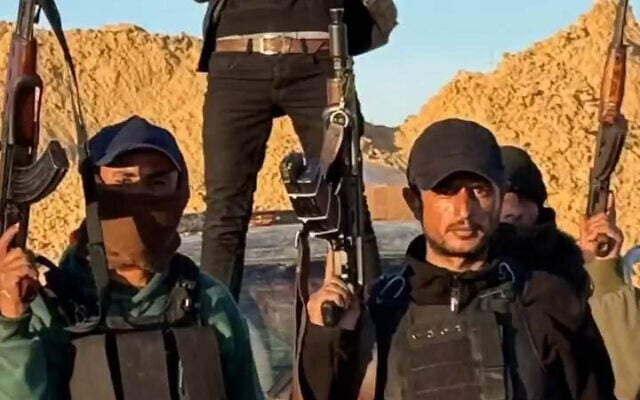
“The only Gazans that we work with are the local Gazan volunteers that are helping us distribute food,” he said. “And so far, those local Gazan volunteers have paid the highest price.”
On June 12, the GHF announced that eight of its “local team members and volunteers” had been killed when Hamas gunmen attacked a bus transporting its Gazan staffers. Others were injured, the GHF said, and it expressed fear that some team members had been taken hostage.
“Not only did they kill them,” Moore revealed, “they dropped them outside of the Nasser Hospital and guarded the wounded and the dead and wouldn’t even allow them to get medical treatment while being piled outside of the Nasser Hospital.”
“I’m not surprised by the violence of Hamas,” he continued. “I am surprised by the dead silence to this very second of the international community.”
The aid professional said that the GHF has alienated potential partners.
“I don’t doubt GHF’s good intentions to relieve hunger and suffering in Gaza,” said the official.
“Since entering the public’s awareness, however, it has displayed a lack of self-awareness both as a humanitarian organization and the environment it operates in. Against a backdrop of intense civilian suffering brought on by a brutal military campaign funded in part by the United States, GHF initially announced its activities would be led by a high-profile former US Marine.”
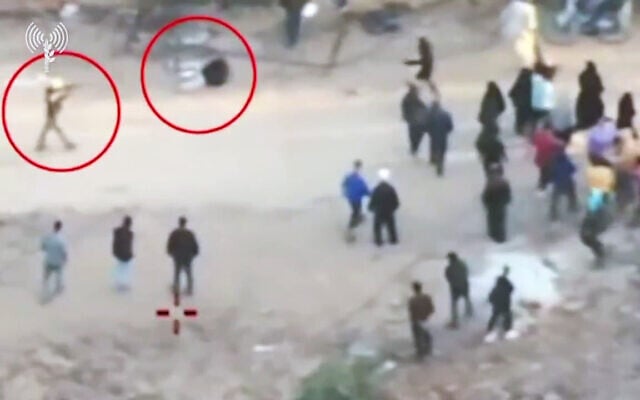
“In an established yet flawed system that relies on fragile trust and mutualism with locals, GHF has chosen to operate alone in its effort to reshape how aid is delivered in Gaza, with predictably mixed results,” the official told The Times of Israel. “Its operational success would greatly improve if it could negotiate the concerns of its peer organizations in distributing aid while pushing them to address and mitigate aid diversion.”
According to Moore, the attitude of some organizations is quietly changing: “We’re starting to hear some rumbles that other organizations, some of which have been talking to us quietly. Now, I think we’re going to start seeing more partnerships around the world.”
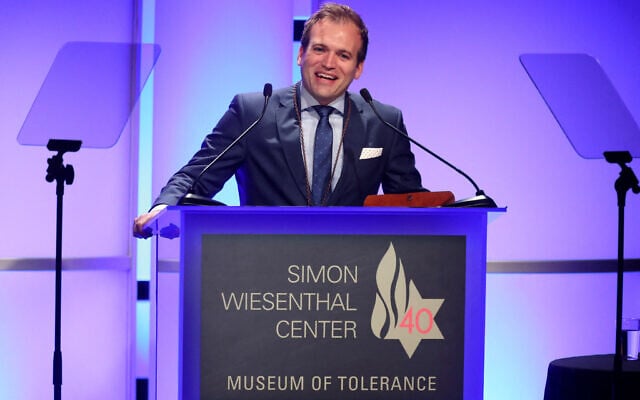
The WFP told The Times of Israel that “we will talk to everybody and anybody to help feed the most vulnerable populations at scale – safely, fairly, and effectively.”
At the same time, the agency said it would not abandon its principles of humanity, impartiality, neutrality, and operational independence.
“WFP is not directly operational with GHF,” said the spokesperson.
Moore said that the way the international community speaks about the GHF is “just so disingenuous.”
“We meet the caloric count standards of the UN. We’re giving boxes that are carefully designed in order to make sure that they’re sufficient, not just in the caloric count, but in a balanced diet for a period of time for individuals and their families. We are not forsaken making those core standards, core values.”
He attributed much of the hostility to the GHF to “disinformation.”
“I think part of the campaign to shut us down is just to wear us out,” he said. “It’s just not going to happen. We’re very focused. We have one mission, feed Gazans, and do it in a way where it’s as secure as possible, and we’re just going to keep doing it.”
